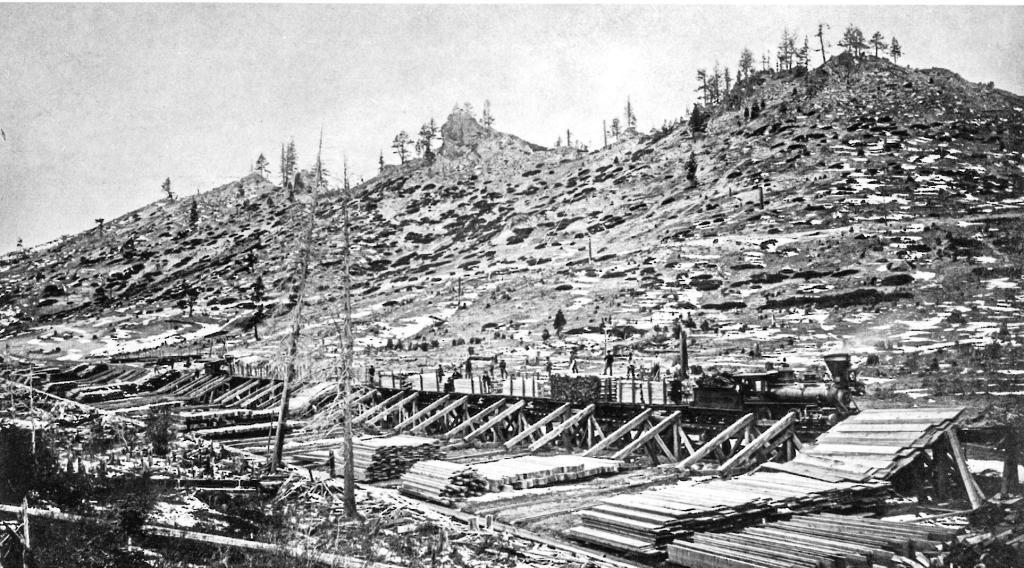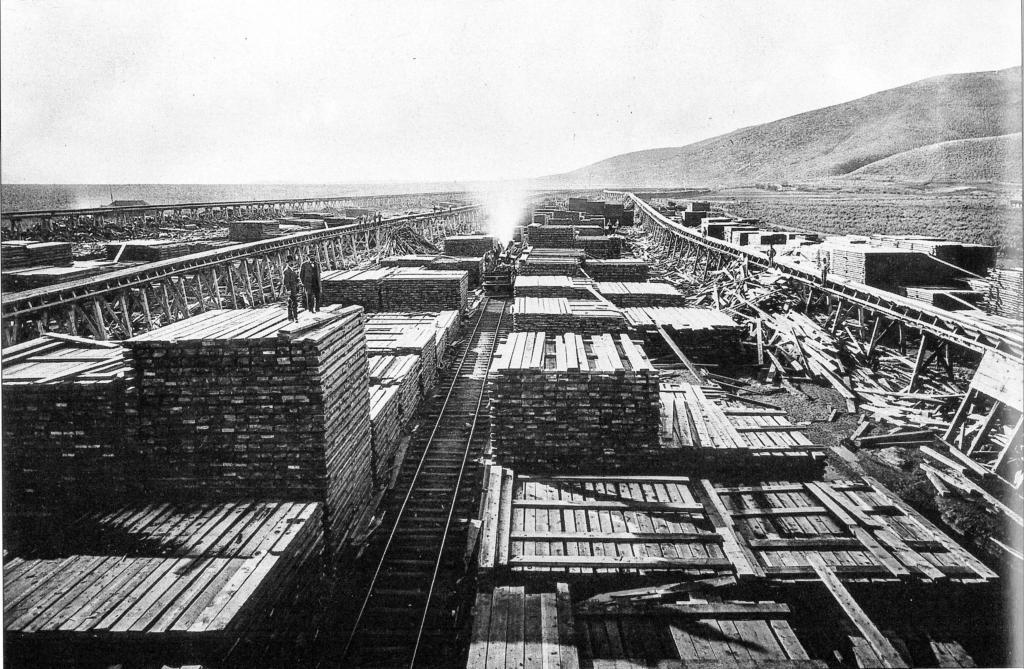Here is some old time film of running logs down a flume.
https://www.youtube.com/watch?v=WWdFZReMhPc
Flumes were pretty common in the Western States back in the heyday of logging, although I think most flumes were used to transport cut lumber rather than saw logs.
One Flume with which I am very familiar was used by the Terry Lumber Company to transport cut lumber from their sawmill on Round Mountain 27 miles down the hills to the
finish mill and box factory at Bella Vista. Having lived in the area for many years I was aquainted with a number of people that their parents or other older relitives had worked
for Terry in the woods, on the railroad, in the mills or as flume tenders. A flume tender lived along the flume and was responsible for a given distance of it, like 1 mile, and had to patrol it
while lumber bundles were floating down. Checking for hang-ups, major leaks or other damage caused by falling trees etc.
One thing I found well documented and would loved to have tried was the flume boat. The “boat” was a couple of 2X 16-20’s ? nailed together in a “V” with a block nailed in each end.
These “boats” were dumped in the flume, you jumped in and the next stop was the bottom of the hill 27 miles away, that is unless it hung up on something and sent you sailing out of the flume.
Just hope you weren’t crossing one of the high trestles at the time if this happened.
It was also recorded that the flume was used as an emergency ambulance. If a logger or mill worker was injured on the mountain they would lay him in a flume boat and send him down the hill.
Of course they would call ahead to the yard office at the bottom to keep an eye out for the injured man if he showed up. Can you imagine being busted up, say with a couple of broken legs, being given a pint of whiskey,
dropped in a flume boat and sent down the flume. I don’t remember off hand the amount of time needed to travel that 27 miles but wow, nothing to do but ride, drink, and hope you made it.
Of course there was always a run on flume boats on Saturday night as the loggers all tried to get to town as fast as possible, at least that was the sober direction.
Unlike the loggers of Mich-Cal at Pino Grande that would crawl the cables across that vast canyon after the tram stoppped running for the night, and believe it or not that wasn’t the sober direction.
Just a little Northern California logging history, probably dosen’t really interest anybody on here other than me.


